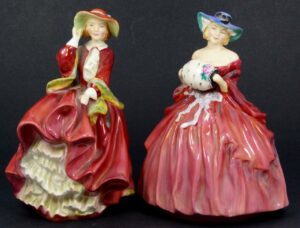The secret of porcelain was closely guarded by the Chinese for generations. The method of its manufacture was highly coveted by Europe and when the Europeans finally learned the arcana of porcelain in the 18th century, a thriving industry immediately came into being. Within a century, the prime producers of porcelain were household names in Europe. Any Englishman of worth owned a set of Wedgwood, and the gentry argued with heat over the craftsmanship of Limoges, Meissens and Havilands.
The Doulton studio, which was established in 1815, was a relative latecomer to the industry. Setting up production at the riverside town of Stoke-on-Trent, part of the bustling Potteries area so named for the presence of its large-scale ceramics operations, the company originally specialised in stoneware pottery. It was moderately successful and by 1871 a studio was launched in the South of London.
In a move that can be called a minor stroke of genius, this studio extended employment to undergraduates of the nearby Lambeth Art School. This allowed them to snap up emerging young talent and most probably contributed to the popularity of their wares, which became highly sought-after by 1890.
Soon the royal family took a keen interest in the Doulton wares, and in 1901 the studio was given a Royal Warrant, allowing them to supply the royal court and to add the appellation “Royal” to their name; henceforth the studio would be known as Royal Doulton. Needless to say, this commission elevated the status of Royal Doulton ceramics to an unprecedented high. Currently, Royal Doulton is owned by the Fiskars Group, who specialise in producing other luxury goods such as Wedgwood and Waterford crystal.
Royal Doulton is one of the most collectable of all ceramics brands. You can find Royal Doulton wares on bidorbuy.










